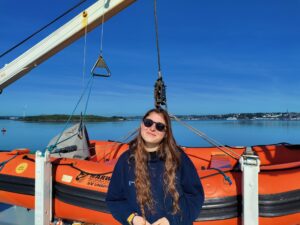This project aims to integrate novel environmental DNA (eDNA) methods with multidisciplinary data for the monitoring of megafauna at a range of infrastructures including cabled observatories as well as aboard research vessels. Objectives of this project include: (1) design and implement ad hoc eDNA protocols and pipelines to be applied in situ in a range of infrastructures/environments in conjunction with multidisciplinary data collection suites, including direct catches, video, audio, oceanographic and geochemical parameters; and (2) “coupling” existing video-based species and richness data and eDNA samples to evaluate molecular and bioinformatic pipelines for eDNA screening of local marine communities, including taxa of ecologic and economic importance (e.g. marine mammals, teleosts, elasmobranchs, crustaceans, cephalopods). The parallel collection of data using different technologies will provide an unprecedented opportunity to empirically evaluate the advantages and limitations of each technique, hence enabling evidence-based decisions on how to effectively improve the application of novel approaches in marine life monitoring and assessment.
This project is co-funded by Atlantic Technological University and the Zoological Station Anthon Dohrn (Naples, Italy).


